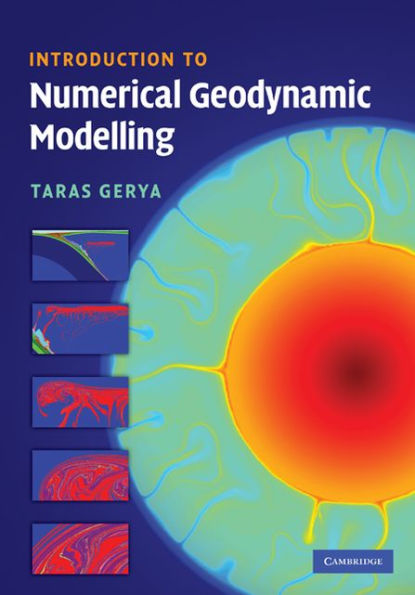Numerical modelling of geodynamic processes was predominantly the domain of high-level mathematicians experienced in numerical and computational techniques. Now, for the first time, students and new researchers in the Earth Sciences can learn the basic theory and applications from a single, accessible reference text. Assuming only minimal prerequisite mathematical training (simple linear algebra and derivatives) the author provides a solid grounding in basic mathematical theory and techniques, including continuum mechanics and partial differential equations, before introducing key numerical and modelling methods. 8 well-documented, state-of–the-art visco-elasto-plastic, 2-D models are then presented, which allow robust modelling of key dynamic processes such as subduction, lithospheric extension, collision, slab break-off, intrusion emplacement, mantle convection and planetary core formation. Incorporating 47 practical exercises and 67 MATLAB examples (for which codes are available online at www.cambridge.org/gerya), this textbook provides a user-friendly introduction for graduate courses or self-study, encouraging readers to experiment with geodynamic models.
1100751685
Introduction to Numerical Geodynamic Modelling
Numerical modelling of geodynamic processes was predominantly the domain of high-level mathematicians experienced in numerical and computational techniques. Now, for the first time, students and new researchers in the Earth Sciences can learn the basic theory and applications from a single, accessible reference text. Assuming only minimal prerequisite mathematical training (simple linear algebra and derivatives) the author provides a solid grounding in basic mathematical theory and techniques, including continuum mechanics and partial differential equations, before introducing key numerical and modelling methods. 8 well-documented, state-of–the-art visco-elasto-plastic, 2-D models are then presented, which allow robust modelling of key dynamic processes such as subduction, lithospheric extension, collision, slab break-off, intrusion emplacement, mantle convection and planetary core formation. Incorporating 47 practical exercises and 67 MATLAB examples (for which codes are available online at www.cambridge.org/gerya), this textbook provides a user-friendly introduction for graduate courses or self-study, encouraging readers to experiment with geodynamic models.
78.99
In Stock
5
1

Introduction to Numerical Geodynamic Modelling

Introduction to Numerical Geodynamic Modelling
eBook
$78.99
$105.00
Save 25%
Current price is $78.99, Original price is $105. You Save 25%.
Related collections and offers
78.99
In Stock

Product Details
| ISBN-13: | 9780511848186 |
|---|---|
| Publisher: | Cambridge University Press |
| Publication date: | 12/17/2009 |
| Series: | Cambridge Studies in Linguistics, 124 Series |
| Sold by: | Barnes & Noble |
| Format: | eBook |
| File size: | 11 MB |
| Note: | This product may take a few minutes to download. |
About the Author
From the B&N Reads Blog
